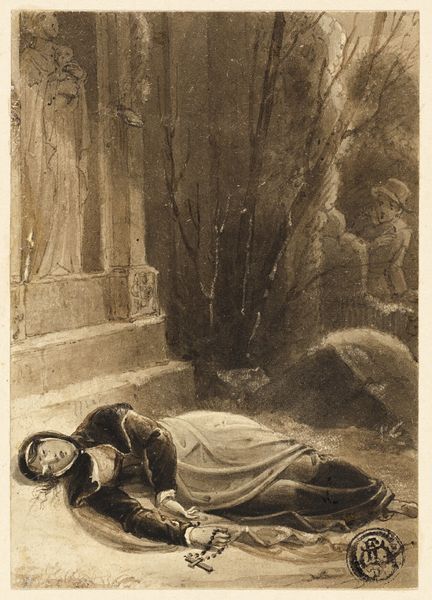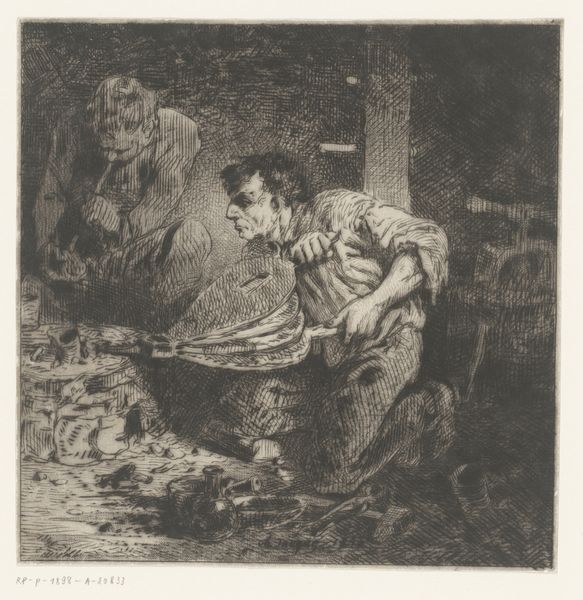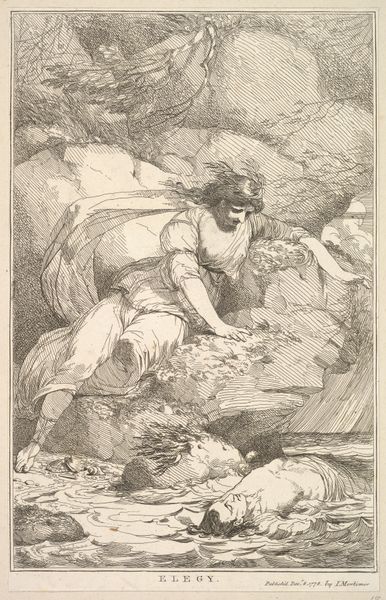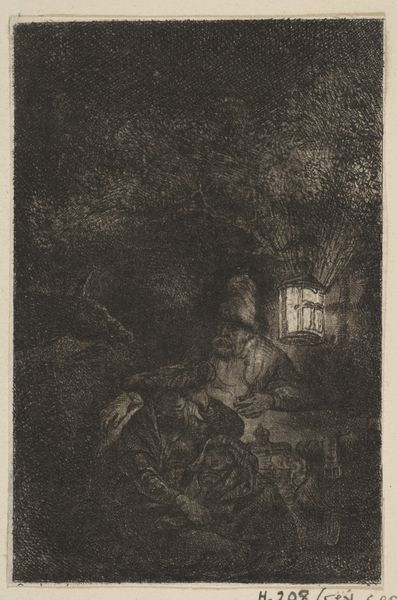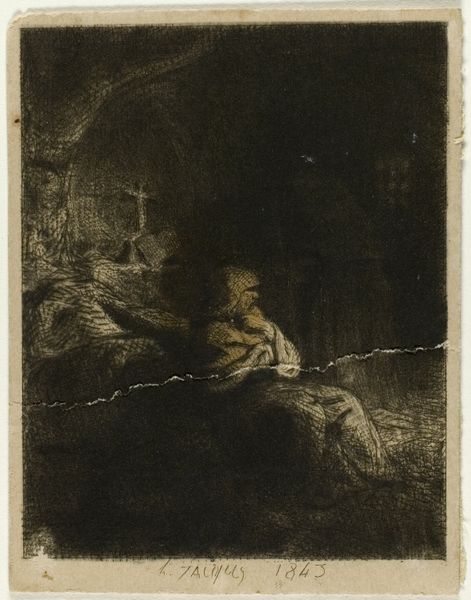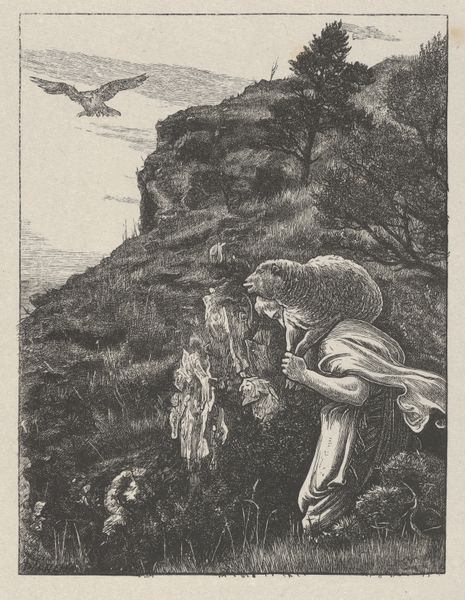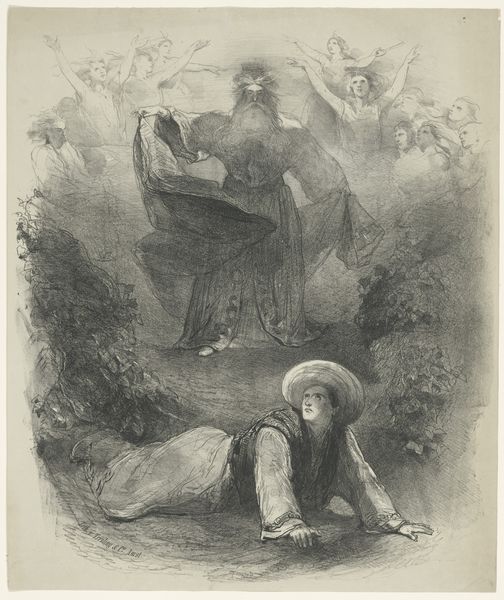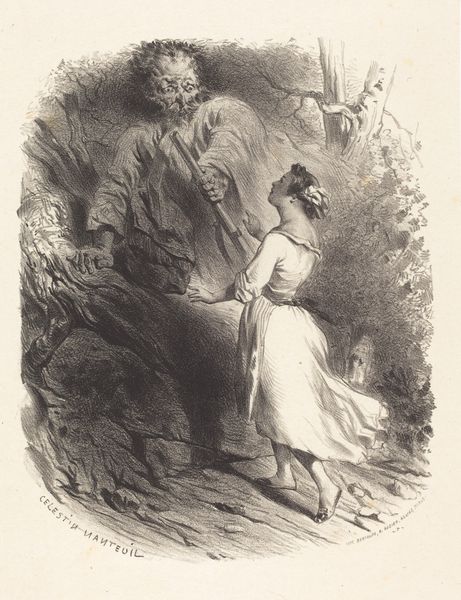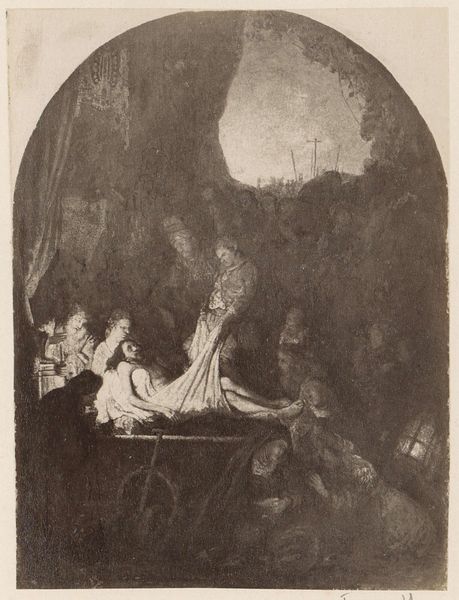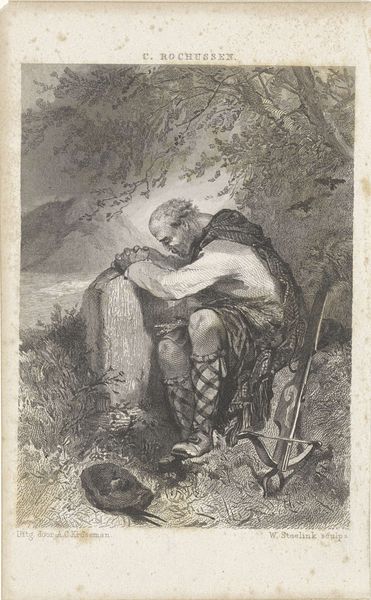
drawing, print, etching
#
portrait
#
drawing
#
baroque
# print
#
etching
#
cross
#
pencil drawing
#
genre-painting
Copyright: Public Domain
Curator: Well, here we are, standing before Jan Lievens' etching of "St. Jerome," likely created sometime between 1620 and 1674. What are your first impressions? Editor: Gloomy, undeniably gloomy. A cavernous dark closing in on the figure, light piercing through to emphasize his isolation and weariness. The composition makes me think about our bodies—the fragility of the hermit's figure versus the cold permanency of the materials surrounding him. Curator: That sense of isolation is palpable, isn't it? Lievens truly captures the ascetic life, the material deprivation St. Jerome endured to translate the Bible. He’s a beacon of intellect diminished by circumstance. A man consumed by his calling, yes, but at what cost to the physical self? Editor: Exactly. We need to consider the labor that's involved both historically for St. Jerome himself, but also the manual work etching demands. The acid, the metal, the physical tools--we don't immediately connect such intense effort with the divine, and I think that is precisely the kind of relationship with the material world this piece asks us to reconsider. Curator: I find Lievens pushes us further—what it is to labor physically with faith or with one's art… I mean, imagine Lievens in his studio, hunched over a copper plate, painstakingly etching those tiny lines. And here we are, centuries later, contemplating the product of his dedication. It speaks to art as endurance, both spiritual and artistic. Editor: Right, and we can appreciate this "endurance" through the market's endurance, too! These kinds of prints were traded among artists; consider the print's dissemination in social networks and trade routes. "Art as endurance" is a beautiful phrase, and perhaps the history of commodification isn't too far afield from that definition, either. Curator: That brings it all back to Jerome himself, who also translated to spread a message, didn't he? Now his story continues with new forms—drawings, etchings. It's a relay race, this act of creation and re-creation. What starts with an individual turns into something that surpasses that individual... Editor: In both message and matter. Thank you; I leave with something profoundly considered. Curator: And I'm grateful for your reminding me to consider all Jerome's hard labor involved.
Comments
No comments
Be the first to comment and join the conversation on the ultimate creative platform.



